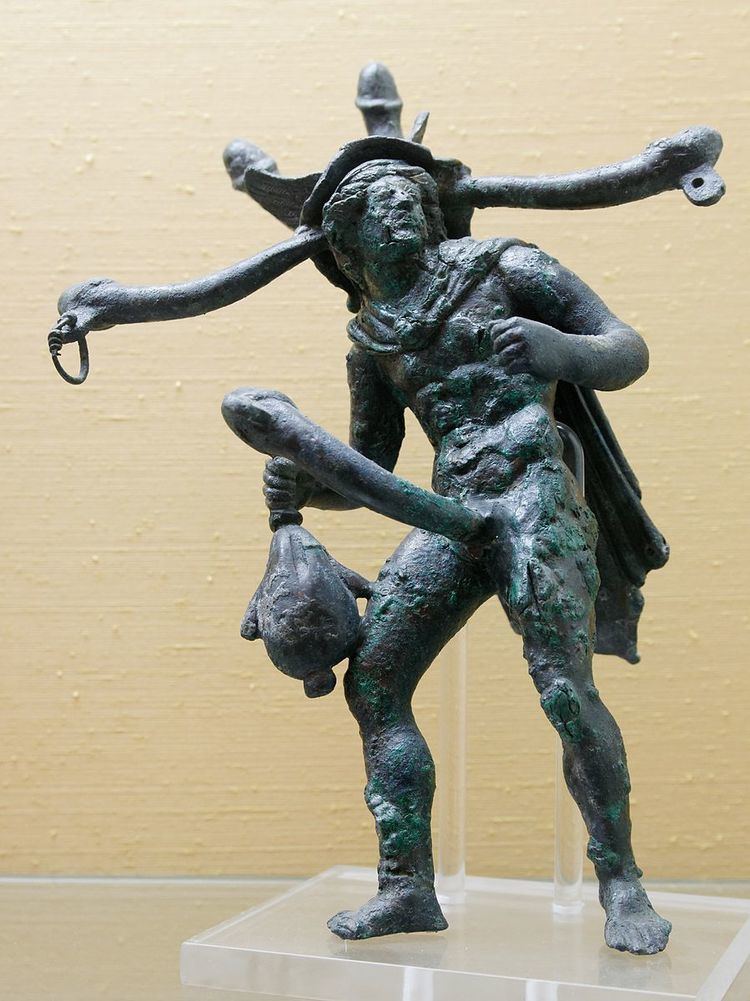 | ||
In ancient Rome, a tintinnabulum (less often tintinnum) was a wind chime or assemblage of bells. A tintinnabulum often took the form of a bronze phallic figure or fascinum, a magico-religious phallus thought to ward off the evil eye and bring good fortune and prosperity.
A tintinnabulum was hung outdoors in locations such as gardens, porticoes, houses, and shops, where the wind would cause them to tinkle. The sounds of bells were believed to keep away evil spirits; compare the apotropaic role of the bell in the "bell, book, and candle" ritual of the earlier Catholic Church.
Hand-bells have been found in sanctuaries and other settings that indicate their religious usage, and were used at the Temple of Iuppiter Tonans, "Jupiter the Thunderer." Elaborately decorated pendants for tintinnabula occur in Etruscan settings, depicting for example women carding wool, spinning, and weaving. Bells were hung on the necks of domestic animals such as horses and sheep to keep track of the animals, but perhaps also for apotropaic purposes.
